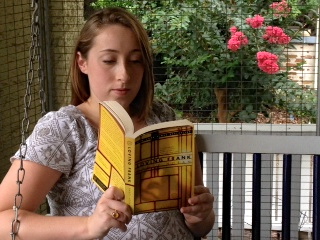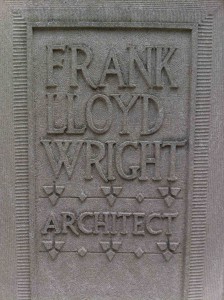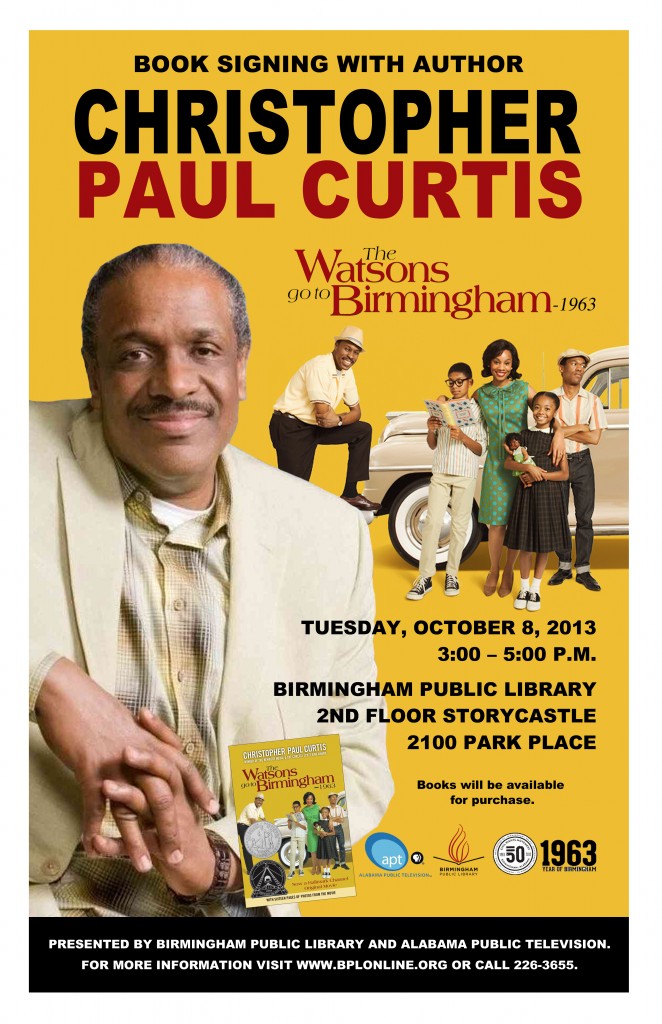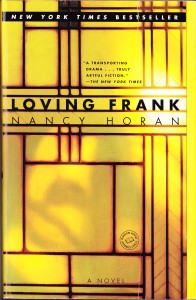Maybe it’s just me, but in my recent trips to bookstores, I’ve noticed an inordinate amount of “wife” titles in the fiction section. The Aviator’s Wife, The Paris Wife, The Time Traveler’s Wife, The Senator’s Wife, Ahab’s Wife, The Shoemaker’s Wife… and a Goodreads search of “wife” will yield many more.
My initial reaction was to slap my forehead in frustration at the sheer number of fictitious tales of women defined in opposition to their husbands, rather than the exploration of their personal identities. My frustration mounted with the realization that nearly all the authors were women. I’ve read enough feminist blogs and articles on the Huffington Post’s Women’s section to know that women who are also wives and/or mothers can feel they lack personal identity, especially when being called “so-and-so’s mom” or “so-and-so’s wife.” I felt there could be no other explanation for the wife fiction phenomena than female authors caving in to social pressures to subvert women’s wills or imply women lack intrinsic value in absence of a husband.
Like any good frustrated feminist bookworm, I did some research. I started reading “wife” books. But I was pleasantly surprised at what I found.
The female protagonists in the books weren’t at all what I expected. They weren’t lacking personal identity. Rather, their fierce individualism shone in spite of society relegating them to the strict, gendered role of wife. It’s well documented that, all too often, women have been written out of history, and these fictitious accounts allow readers to empathize with the woman, thereby giving her a voice.
For example, The Paris Wife follows Hadley Richardson, Ernest Hemingway’s first wife, during the time they lived in Paris in the 1920s before Ernest had really made a voice for himself. In the end, Ernest leaves Hadley for another woman (this is said on the book jacket, so it isn’t a spoiler). Being a famous writer, I doubt he was harshly chastised for this (celebrities still get off with a mere slap on the hand), yet the book illustrates what that must have felt like for Hadley.
Likewise, I read that Ahab’s Wife was conjured from a passing mention of Ahab’s wife in Moby Dick. I realize that Hadley Richardson was indeed a real person and Ahab’s wife Una was fictitious, but Ahab’s Wife still provides an important rendering of womanhood in nineteenth century America.
It seems that, counterintuitively and contrary to my initial reaction, these fictitious accounts from the wives’ point of view are showing the value of the female experience and fighting against the sexist biases of historic accounts. The eras may be past, but my hope is that these novels will make readers think of them more broadly. You know what they say, better late than never.
Mandy Shunnarah is a freelance writer and editor, and an aspiring novelist. When she’s not writing, she can be found reading, learning to letterpress, watching Downton Abbey and Game of Thrones, and finding stray cats to cuddle with. Follow her on Twitter at@fixedbaroque and @awhitewrites.
]]> If you were to ask me the best book I’ve read in the past two years, I could tell you without thinking about it. Yet, as much as I have loved A Partial History of Lost Causes by Jennifer duBois, I’ve actually avoided writing a book review about it. It’s not because I want to keep it to myself, but because I was afraid I wouldn’t be able to adequately articulate just how much I love this book.
If you were to ask me the best book I’ve read in the past two years, I could tell you without thinking about it. Yet, as much as I have loved A Partial History of Lost Causes by Jennifer duBois, I’ve actually avoided writing a book review about it. It’s not because I want to keep it to myself, but because I was afraid I wouldn’t be able to adequately articulate just how much I love this book.
Despite listening to a myriad of book podcasts and keeping up with a number of book news websites, I’ve heard nothing of A Partial History of Lost Causes from any sources. I found the novel one day while in Square Books in Oxford, Mississippi. The book wasn’t displayed prominently on a table. It wasn’t featured in the store’s newsletter. It wasn’t chosen as a staff pick. I was walking past a row of shelves and it called to me.
The novel follows Irina Ellison, a thirty-year-old working toward her Ph.D. in Russian literature at Harvard. She fears she has inherited Huntington’s disease, which claimed her father’s life. When her father’s mind was still intact, he admired Alexandr Bezetov, a young Russian chess prodigy who later became world chess champion. When shuffling through some of her father’s papers after his death, Irina finds a copy of a letter written to Bezetov asking him a poignant question—how do you proceed gracefully in a lost cause? This discovery propels Irina to leave everything behind to find Bezetov in Russia. Her father never received an adequate answer, and Irina feels she must retrieve it, for her father and for herself.
A Partial History of Lost Causes is literary fiction of the best kind. While every sentence is crafted into a museum-quality work of art, it’s not off-putting by being intentionally difficult to read in order to uphold the dignity of the literary arts. It reads like a story written by an author who knows she has nothing to prove. And duBois doesn’t—I mean, she recently won a MacArthur Genius Award for pete’s sake…
What drew me into the novel was that without an ounce of magical realism, Irina embarks on an adventure—both literally and of self-discovery—that doesn’t hinge on a romantic relationship. And although her journey doesn’t lead her to a concrete answer for how to proceed gracefully in a lost cause, she learns so much along the way that, as the reader, you hardly notice that she doesn’t technically succeed in her quest. In truth, there are no concrete answers to life’s toughest questions because the answers are different for everyone’s experiences. For this reason, I appreciate that duBois didn’t try to fabricate an answer because it would have ruined the novel with its dishonesty. And, contrary to what the fiction genre implies, it’s heavily rooted in the truth.
Furthermore, because of the circumstances of Irina’s health, she presents herself as cold and standoffish since she fears making human connections knowing she may not be around long enough to see them flourish. Despite her seeming coldness, as a reader and a woman, I readily related to her. Any woman who has ever wanted to do something “drastic” that she knows will give her life meaning and has faced opposition by friends and family as a result will understand the urgency of Irina’s quest and respect the boldness of her will. Irina’s adventure masks another prominent question that A Partial History of Lost Causes asks: What would you do if you knew you only had one year to live? I found that Irina’s journey inspired me to ask myself some tough questions.
Amid the philosophical complexities of the novel, the story is laden with Russian history and politics. However, duBois is careful not to overwhelm the reader with extraneous details—each detail presented moves the story forward. duBois minces no words and wastes no sentence. As you read, you’ll likely find yourself underlining captivating phrases. Even with as many books as I consume, duBois strung words together in a way that rendered me in awe of the beauty of the English language.
For more information on Jennifer duBois and A Partial History of Lost Causes, check out duBois’ author page and learn more on Goodreads.
Mandy Shunnarah is a freelance writer and editor, and an aspiring novelist. When she’s not writing, she can be found reading, learning to letterpress, watching Downton Abbey and Game of Thrones, and finding stray cats to cuddle with. Follow her on Twitter at@fixedbaroque and @awhitewrites.
]]>
Three years ago when Keith Lee was in his last year of law school the job market was bleak for young lawyers. Lee knew he needed to do something to make himself stand out. So he started a blog.
Lee’s blog Associate’s Mind soon became one of the most popular law blogs around and eventually landed him a book deal with the American Bar Association.
Lee’s first book, The Marble and the Sculptor, was released last week and is shaping up to be the fastest selling book the ABA has published.
Despite the success of his blog and debut book, Lee says, “I still have trouble thinking of myself as a writer.”
The Marble and the Sculptor is intended to be a manual for young lawyers but has life advice that could be useful to anyone in any career. The book’s title is from a quote by the controversial Nobel Prize-winning surgeon and biologist Alexis Carrel: “Man cannot remake himself without suffering, for he is both the marble and the sculptor.”
And this title speaks to the essence of the book: self-transformation. Lee, who works at Hamer Law Group in Birmingham, Ala., told The Birmingham News: “That quote describes the transitions I made in life to grow. It’s not so much adding to my life, it’s what I’m cutting away from it that matters.”
Just as Lee’s book can be useful to people who aren’t lawyers, his blogging journey has lessons for bloggers of any niche.
While working on his book, Lee continued to blog regularly, practice law, spend time with his wife and son, and attend networking events around Birmingham.
“Sleep is for the weak,” Lee says with a laugh, adding that he doesn’t watch much TV. He does, however, make time to exercise regularly as it gives him the energy he needs to be efficient and productive.
Though Lee still struggles to see himself as a writer, he’s accomplished what many writers dream of doing: landing book deals through their blogs.
When the ABA conducted a survey asking their young lawyers division where they turn for industry news, Lee’s Associate’s Mind blog was one of the top three websites these young attorneys listed. And so when the ABA wanted to publish a book for emerging lawyers, they knew Lee was just the person they needed.
Lee says he built his following largely through online networking. He stresses the importance of commenting on other blogs. Find other bloggers in your niche and become a part of their communities, he says.
Instead of depending on social media, Lee says, “Email is king.” When he was growing his blog Lee would often share, via email, interesting and important information with popular law bloggers. To show appreciation, those bloggers would then mention Lee in the posts related to the information he passed along. And after Lee built relationships with these established bloggers they were also willing to promote Lee’s site more directly.
This type of marketing takes time, Lee says, but it works.
“It’s about providing value to other people,” he says.
Keith Lee’s book launch party for The Marble and The Sculptor will be held Nov. 14 starting at 5:30 p.m. at Aloft Hotel, 1903 29th Ave S. in Homewood. The event is free and open to the public.
]]>
DON’T wait till you’re published to start building your platform.
Launching your blog or getting started on Twitter right before your book is published is like sending out invitations to a party on the day of the party. Start connecting with readers BEFORE your book comes out – as soon as possible – so that you have an audience that already loves your writing.
DON’T be all about your book.
Social media isn’t all SELL, SELL, SELL. It’s more about CONNECT, CONNECT, CONNECT. Use social media to tell about your writing process, your hobbies, your characters, what you’re working on next. Let readers see you’re a person, not a product.
DON’T be a temperamental artist.
It’s tempting to think, “I’m a writer, not a Kardashian. My work should speak for itself.” The sad truth is no one can fall in love with your book if they don’t know about it. Embrace social media. Be brave.
DON’T let marketing take over your writing.
Between Twitter, Facebook, Goodreads, your blog and book tour…when are you supposed to WRITE? It’s a struggle, no lie, but you have to find the balance that works for you. Remember, nothing promotes Book 1 like Book 2. Writing comes first.
DO approach social media as another form of writing.
Social media is primarily a writing exercise and guess what…you’re a writer. Instead of thinking “I’m no good at social media,” think of each tweet as a sentence, each blog post as a short story. These are things you’re good at, remember? Use the voice from your book, your strengths as a writer and you can’t go wrong.
DO think beyond Facebook and Twitter.
There are lots of fun social media platforms out there to try. Goodreads lets you connect with readers and even have book giveaways. Does your main character love to cook? Write a blog post about their favorite recipe and put it on Pinterest. Lots of real locations in your book? Snap some pics and put them on Instagram.
DO use social media to network with other writers as well as readers.
Writing isn’t a competitive sport. Promoting other writers can actually bring more readers to your work. So host writers on your blog and make guest appearances on theirs. Cross-promote. Networking with other writers really helps make marketing your book more fun.
DO embrace the platform you’re most comfortable with.
There is no magic formula for promoting books via social media. However, it just makes sense that you’ll do your best work on the platform you’re most comfortable with. Make that your “go-to” and use the other ones more sparingly. Once you’re in your groove – and you WILL get in a groove once you’ve been doing it a while – you’ll realize it’s second nature, and maybe even fun.
 When she’s not writing mysteries under the pen name, Billie Thomas, Stephanie Naman works at an advertising agency in Birmingham – which might explain why she’s constantly thinking up ways to kill people without getting caught. MURDER ON THE FIRST DAY OF CHRISTMAS is her first novel. She blogs as her main character Chloe Carstairs at chloegetsaclue.com and you can follow her on Twitter at @ChloeGetsaClue.
When she’s not writing mysteries under the pen name, Billie Thomas, Stephanie Naman works at an advertising agency in Birmingham – which might explain why she’s constantly thinking up ways to kill people without getting caught. MURDER ON THE FIRST DAY OF CHRISTMAS is her first novel. She blogs as her main character Chloe Carstairs at chloegetsaclue.com and you can follow her on Twitter at @ChloeGetsaClue.
For more social media tips visit the See Jane Write Birmingham blog for a recap of our recent event I Tweet, Therefore I Am: A Social Media Panel Discussion.
]]>Author Christopher Paul Curtis feels comfortable in a library.
It’s where he’s written many of his books, including his first one, The Watsons Go to Birmingham – 1963, which has won numerous awards.
On Tuesday, Oct. 8, he will visit the Birmingham Public Library. But it won’t be to work on his next novel. It will be to sign copies of The Watsons Go to Birmingham – 1963 from 3 to 5 p.m. in the second floor Story Castle. He’ll also answer questions. The event is made possible by Alabama Public Television.
Curtis, 60, took off a year from unloading trucks in a Michigan warehouse in 1993 to write the fictional book, which looks at a family’s trip from Flint, Mich. to Birmingham at the height of the civil rights movement. The Sept. 15, 1963 bombing of Birmingham’s Sixteenth Street Baptist Church is featured in the book.
Originally, he had written that the Watsons took a trip to Florida. But when they got to Florida, nothing happened. He knew there had to be more to the story. He later discovered Detroit poet Dudley Randall’s “The Ballad of Birmingham,’’ a poem about the church bombing. Once Curtis saw the poem, he knew Birmingham was where the Watsons needed to go.
“I’m glad I did,’’ he says. “If I let them go to Florida, I can guarantee you wouldn’t be talking to me right now. I would be unloading trucks in a warehouse.’’
A year after writing the book, he returned to working in the warehouse in 1995 and submitted his book to two publishers. The first publisher rejected it, telling him that while she felt the characters were funny and well-developed, she didn’t feel that the story would resonate with young readers. The second publisher, Random House, accepted it.
Rejection from the first publisher showed Curtis that that was just one person’s opinion and he couldn’t let it defeat him. Today, he’s written seven books, his eighth book will be out next fall, he makes public appearances across the country, and has seen The Watsons made into a television movie, which aired in September on the Hallmak Channel. DVDs of the movie are now sold in Walmart. Teachers across the nation have made it required reading for years. More than 2,000 fourth graders in Birmingham City Schools are currently reading the book as part of a partnership between the City of Birmingham, the Birmingham Public Library and the schools. Curtis has sold 2.6 million copies of The Watsons since 1995. He stopped unloading trucks years ago.
“If I see her (the first publisher), I’m going to go ‘Nanh nah naahh nah,’ ’’ says Curtis, who is married with children and lives in Detroit.
Here, he offers his views on the book and writing:
Where he got his characters:
All the characters are composites. They are a little bit of Curtis, his brother, his sisters and some of parents. A lot of the things in the book happened to Curtis or to friends.
Why he uses his whole name as an author:
When he started writing, he did research to see if anyone else had his name. A man named Christopher Curtis had written the 1979 book “Be Your Own Chimney Sweep.’’ He added Paul to separate himself from the other Curtis.
Why he never takes writing for granted:
He worked in a car factory for 13 years in Flint, Mich. and worked four or five years hauling garbage, mowing lawns, being a maintenance worker and working on a senator’s campaign. “I know what real work is and I know how lucky I am,’’ he says.
His three tips for writers:
Be persistent, be dedicated and have fun writing.
How to handle self-doubt, especially in writing:
Self-doubt is always going to be there, but it’s a good thing. It keeps you on your toes. Through time and experience, you learn what’s good and what isn’t.
Why he went to the library every day to write:
He didn’t like writing at home or a coffee shop. He preferred the library, where he wrote his first book in longhand. His son would type it for him. He didn’t look at his year off to write as a vacation. He looked at it as a job. He was at the library, rain or shine, writing.
Has anyone asked him to do a Part 2 to The Watsons?
“I don’t’ think I would,” he says. “The Watsons have been through enough. I’m going to leave them alone.”
For our Man of the Hour feature we take down the “No Boys Allowed” sign and share stories of men who are doing great things in the writing world. Send your nominations for Man of the Hour to seejanewritemag@gmail.com.
]]>

Kathryn Lang wants to help you discover your purpose and she wants to help you pursue that purpose. She believes she can do all this with four simple questions: Why? What? How? and When?
These four questions are the core of her new book Place in Purpose, which she’ll be debuting at the Southern Women’s Show in Birmingham, Oct. 3-6.
Lang will be at the Southern Women’s Show not only to promote her new book and her 4 Questions seminar, but also to promote the work of other authors with her company Peculiar Productions.
As the name might suggest, Peculiar Productions is a company that celebrates individuality. The Peculiar Productions slogan is “Being normal is overrated” and the company strives to help people figure out their unique vision of success and how to obtain it.
“Peculiar Productions began as a cooperative between several authors, editors and graphic designers, but it has grown to be more than just about publishing and more about discovering a path for life,” Lang says. “Although we do still work to help writers connect with editors, cover designers and formatters, we are just as concerned about helping everyone map out a path to success.”
And Lang strives to help her authors and other clients pave a path to success by helping them answer those four crucial questions.
“I have molded the information into several formats so that I can provide the information in a classroom setting, a weekend conference or seminar or through one-on-one consultation packages,” Lang explains.
Lang will help you answer things such as Why are you doing what you’re doing? What do you want to do? How much time do you spend doing things? What are your strengths? When will you implement your plan?
Lang is giving away two pairs of tickets to the Southern Women’s Show to a couple of lucky See Jane Write Magazine readers.
Use the form below to enter. You have until 11:59 p.m. Thursday, Sept. 26. to do so. The winners will be announced Friday morning. Good luck!
]]> Yesterday marked the 50th anniversary of the Birmingham church bombing that took the lives of four little girls. Thirty-two years after this tragedy only one person — Robert “Dynamite Bob” Chambliss — had been convicted in the murders. Two suspects were already dead, as were several key witnesses. Many considered this a hopeless case.
Yesterday marked the 50th anniversary of the Birmingham church bombing that took the lives of four little girls. Thirty-two years after this tragedy only one person — Robert “Dynamite Bob” Chambliss — had been convicted in the murders. Two suspects were already dead, as were several key witnesses. Many considered this a hopeless case.
Birmingham police detective Sergeant Ben Herren and FBI Special Agent Bill Fleming did not.
In 1995 Herren and Fleming reopened the case and for over a year combed through the original FBI files on the bombing and activities of the Ku Klux Klan and then began a search for new evidence.
In her new book Last Chance for Justice: How Relentless Investigators Uncovered New Evidence Convicting the Birmingham Church Bombers, T.K. Thorne gives readers an inside look into the investigation from the perspectives of Herren and Fleming.
Thorne is certainly the right person to tell this story. Author of the award-winning novel Noah’s Wife, Thorne is a natural storyteller. Thorne is also a retired captain from the Birmingham Police Department.
We had a chat with her recently about the book, Birmingham, and more.

SJW Mag: How did you get interested in writing a book on this topic?
Thorne: I never thought I would be writing a book on this topic! When the last two suspects were tried, I did realize that it was history in the making and tried to attend the trials, but the crowd was so large, I ended up standing in the hallway and gave up on it.
In 2004, I heard Sergeant Ben Herren and Bill Fleming speak about the case, and I was stunned on two accounts. For one, I didn’t realize that one of the primary investigators on the last case – which was reopened in the 1990’s – was someone I knew. Herren and I had worked together over the years in the Birmingham Police Department. The other surprise was how long and intensive the investigations were. Over four decades the case was investigated three times. Each time, law enforcement spent five years working on it.
I was aware that many people in the community—especially the African American community—felt the FBI had not put much effort into seeking justice. Although the FBI knew who the suspects were, no one was tried in the 60’s. Distrust still simmered between the black community and law enforcement.
I began then to feel a pull and responsibility to set the record straight.
How did your experience in and connections with the police department help you in your research?
The investigators knew that I understood their perspectives and the constraints that law enforcement works under. They trusted me to get it right and trusted me with the complexities of the investigation, as well as understanding the humor that is always involved in police work. In addition, I knew most of the prosecutors, and I was familiar with criminal court proceedings, constitutional law issues, etcetera. It was a tremendous advantage.
This book seems like quite an undertaking. How did you go about organizing your research and writing process?
In the beginning, I met with Herren and Fleming, intending to just record interviews with them and donate the tapes to a library or the Birmingham Civil Rights Institute. At the time, Fleming had retired and Herren was close to it. I was afraid their story, an important piece of history, would be lost. We met for eighteen months about once a week during our lunch hour and recorded the interviews. When we were finished, they told me they wanted me to write the book! Thinking I was just interviewing them for posterity, I hadn’t taken the first note!
Luckily, I found someone who transcribed the tapes onto a digital word processing program. Then I created a time outline of witnesses and events and began searching the interview files for every mention of each witness. I was fortunate to have a box of Fleming’s personal copies of summary documents and reports. In addition, I had access to the public library’s files, which were donated by Bill Baxley after the 1997 trial and conviction of Robert “Dynamite Bob” Chambliss. And the FBI gave me access to more files. I read books for background information and interviewed other participants. Overall, it was a four-year project.
Since you have experience with both, can you talk about some of the major differences in writing a non-fiction book versus a novel?
Writing a novel is an organic process for me. I am in charge of the general plotting and research, but my characters are responsible for reacting in their own way and thus determining the course of the story. I might have a very general idea of where I am going or a scene at the end, but my characters often surprise me, and that is an aspect I love about the fiction process. When I finished my historical novel, Noah’s Wife, which was also a four year project, I was a little depressed for a while, because I missed hearing the characters in my head. I know; they have pills for that.
On the other hand, writing non-fiction required much more structure and organization. There was certainly drama and suspense in Last Chance for Justice, but I couldn’t create it from my imagination. I had to dig for it—ask questions and find real details that would help bring the characters to life and move the story forward. In that sense, the same skills of the craft of writing come into play. For this project, it was also my responsibility to present different perspectives while being objective, to plumb ironies, and to get it as right as possible.
What differences did you find in the publishing and marketing processes?
I found it much easier to find a publisher for non-fiction. Publishing in the fiction world is very tough right now.
Marketing, however, seems to be the same process for fiction and non-fiction, though there are probably more opportunities with non-fiction. I will say it is very helpful to have a team behind you, but the responsibility still lies on the author’s shoulders.
What would you say to people who argue that discussing things like the Sixteenth Street Baptist Church bombing is divisive and harmful to race relations?
I understand that many people are frustrated that Birmingham seems stuck in the 1960’s, and they feel that we can’t move forward if we keep talking about our past. But we can’t ignore our city’s past, any more than an adult can disclaim his or her childhood. That doesn’t mean that we are simply who we were as children, but our past is part of us. It’s healthy for us to have honest discussions about it. It’s healthy for Birmingham to embrace understanding its past as one of its strengths, not a weakness.
One problem we have is that some people feel the world has only one image of Birmingham—dogs and hoses. People who want us to just move on resent that, but the real story is much more complex, and we can’t recognize that complexity and richness if we ignore it.
I just heard former mayor/congressman/U.S. ambassador and civil rights activist Andrew Young talk about how the business community in Birmingham stepped forward and reached agreements with the Civil Rights leaders, both for business and moral reasons. We can be proud that the city voted to change the government in order to remove Bull Connor from office and make progressive strides; that law enforcement, despite the wrongs of the past, did work diligently on this case; that people risked their lives to step forward and testify to bring about justice. And we can celebrate with pride that men, women and children bravely stood up to injustice here in our city and provided a model for other struggling peoples throughout the world. We are the result of all these things.
Why do you think it’s important for not only Birmingham residents, but all Americans to remember the events of the civil rights movement of the 1960s?
If we don’t remember our history—where we came from—how can we know who we are? If we forget our past, we risk forgetting what we are capable of. It is through the lens of the Civil Rights struggle, for example, that we recognized injustices to immigrants. Knowing what lies at the bottom of the slippery slope is what keeps us from falling.
T.K. Thorne will be signing copies of her book 1-3 p.m. on Sat., Sept. 28 at the Books-A-Million in Colonial Brookwood Village in Birmingham.
]]>
Review by Mandy Shunnarah
If you’re like me, the idea of reading a historical fiction romance is more than a little gimmicky. It’s the sort of book I’m almost embarrassed to be seen with or admit I’ve read. But there was something about Nancy Horan’s novel Loving Frank that caught my eye, and I thank the book gods it did.
Loving Frank transports the reader to early 20th century Oak Park, Ill. (today a swanky Chicago suburb). Mamah Borthwick Cheney is in a complacent, yet loveless marriage and the irreverent and brazen Frank Lloyd Wright intrigues her. As Frank designs the Cheney’s family home, he and Mamah connect on multiple levels. In 1907, the pair decides to leave their families and start a life together in Europe. Over the course of several countries and 200 pages, the reader enters the couple’s tumultuous, hopeful, and deeply complicated relationship. In a time when women were still thought to be the property of the husbands, Mamah is guilted by her friends and family to return home at the expense of her happiness. This is further complicated by the media’s obsession with Frank’s architectural idiosyncrasies and family abandonment. Then, at the moment when freedom from the media’s blitz and incorporating each of their families into their relationship seems feasible, the sort of “divine retribution” their families and the media predicted occurs–and the hopscotch trail of foreshadowing is so masterfully rendered that you’ll read the chapter again and again.

I picked up Loving Frank because I was looking for a summer “beach read,” so I was surprised to find how much I learned from the book. Horan spent years researching Frank Lloyd Wright’s architecture, family, and travels, as well as the little information there was to be gleaned about Mamah Borthwick Cheney, and it shows in her work. Many of the letters and newspaper articles were taken from Wright and Cheney’s archives. Far from reading like a history book, Loving Frank is an exercise in being intimately connected with strangers from the past.

Photo Credit: Mandy Shunnarah
Yet, Loving Frank doesn’t read like your typical steamy page-turner either. You won’t find any erotically descriptive scenes or unwarranted infatuation. Frank and Mamah fall in love for the most authentic and simplest of reasons: they understand each other. Their mutual understanding is spiritual, philosophical, artistic, and, above all, intellectual; it’s an understanding deeper than bodily admiration and the obligations of family. When asked how they can abandon their domestic duties, they answer that they wish to “live honestly.” The pair would rather spend a life together yearning for peace of mind from the public than a quiet life apart yearning for happiness in their failed marriages.

Photo Credit: Mandy Shunnarah
In this unexpected way, I found Loving Frank to be an oddly feminist novel. Mamah exudes the sort of unabashed realist feminism that the fiercely independent singletons often wish to condemn. Because Mamah is steadfast in her course to live honestly, never bending to the will of the society that damns her, I find her to be the accessible type of feminist that is militant and heroic in her own way, commanding respect with her lifestyle. Loving Frank’s plot may hinge upon a romantic relationship, but the protagonist Mamah is made of stronger stuff.

If you’re looking for a book that’s simultaneously surprisingly educational and pleasantly light, add Loving Frank to your shelf.
Do you have a book you’d like See Jane Write Magazine to review? Would you like to write a book review for our website? Send book review pitches to seejanewritemag@gmail.com.
Mandy Shunnarah is a freelance writer and editor, and an aspiring novelist. When she’s not writing, she can be found reading, learning to letterpress, watching Downton Abbey and Game of Thrones, and finding stray cats to cuddle with. Follow her on Twitter at @fixedbaroque and @awhitewrites.
]]>




